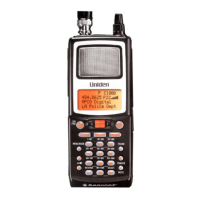The four systems in use are:
• Motorola Type I – the radios send the radio ID, the fleet
and subfleet talkgroup ID to the control channel each time
they transmit. To program a Type I system, you need to
know the system’s fleet map. The most common fleet maps
are included at the back of this manual. You can also find
fleet map resources on the web.
• Motorola Type II – the radios only send the radio ID and
radio channel code to the control channel. The central com-
puter keeps a database of radio ID’s and which talkgroup is
assigned to which channel code for each radio, so with this
system the user’s radio sends only about 1/3 the data as a
Type I system with each transmission. Type II systems do
not use Fleet-subfleet talkgroups; instead they use a 5-digit
ID for each talkgroup.
• Type IIi Hybrid — these systems support a mix of both
Type I and Type II users. Like Type I systems, you must
know the system’s fleetmap to ensure proper tracking.
• Motorola Astro Digital — for channel control purposes,
this type of system operates just like a Type II system —
although the control channel can be a 3600 bps data rate
(for mixed analog/digital systems) or a 9600 bps (for digital-
only systems). Pure digital systems can be implemented
under APCO 25 Phase 1 or Phase 2 standards. Your
BC296D is able to decode all unencrypted digitized voice
traffic on either mixed mode or digital-only APCO 25 Phase
1 systems.
One big difference you will notice with digital versus analog
transmissions, is that with analog systems, you might be able
to hear weak signals interspersed with hissing. As you move
further away from the system, the interference gradually
increases until you are unable to make out the transmission.
With digital systems, the cutoff point is much more abrupt.
You might have a small area where partial decoding
occurs...in which case you will hear partial and garbled audio.
However, once the scanner is unable to receive the data well
enough to decode it, the audio stops entirely. For the best
range, antenna selection and placement is critical. See
“Installing the Antenna” for more information.
EDACS Trunking
EDACS trunking works in much the same way as Motorola
trunking with a couple of major differences. In an EDACS
system, each frequency used by the system is assigned a
Logical Channel Number (LCN) so that less data needs to be
transmitted by the control channel. Also, talkgroups are
assigned in an Agency-Fleet-Subfleet (AFS) hierarchy. Also,
there is one variation of EDACS called SCAT that your
BC296D can monitor.
8
BC296D(NEW) 10/16/03 6:35 PM Page 8

